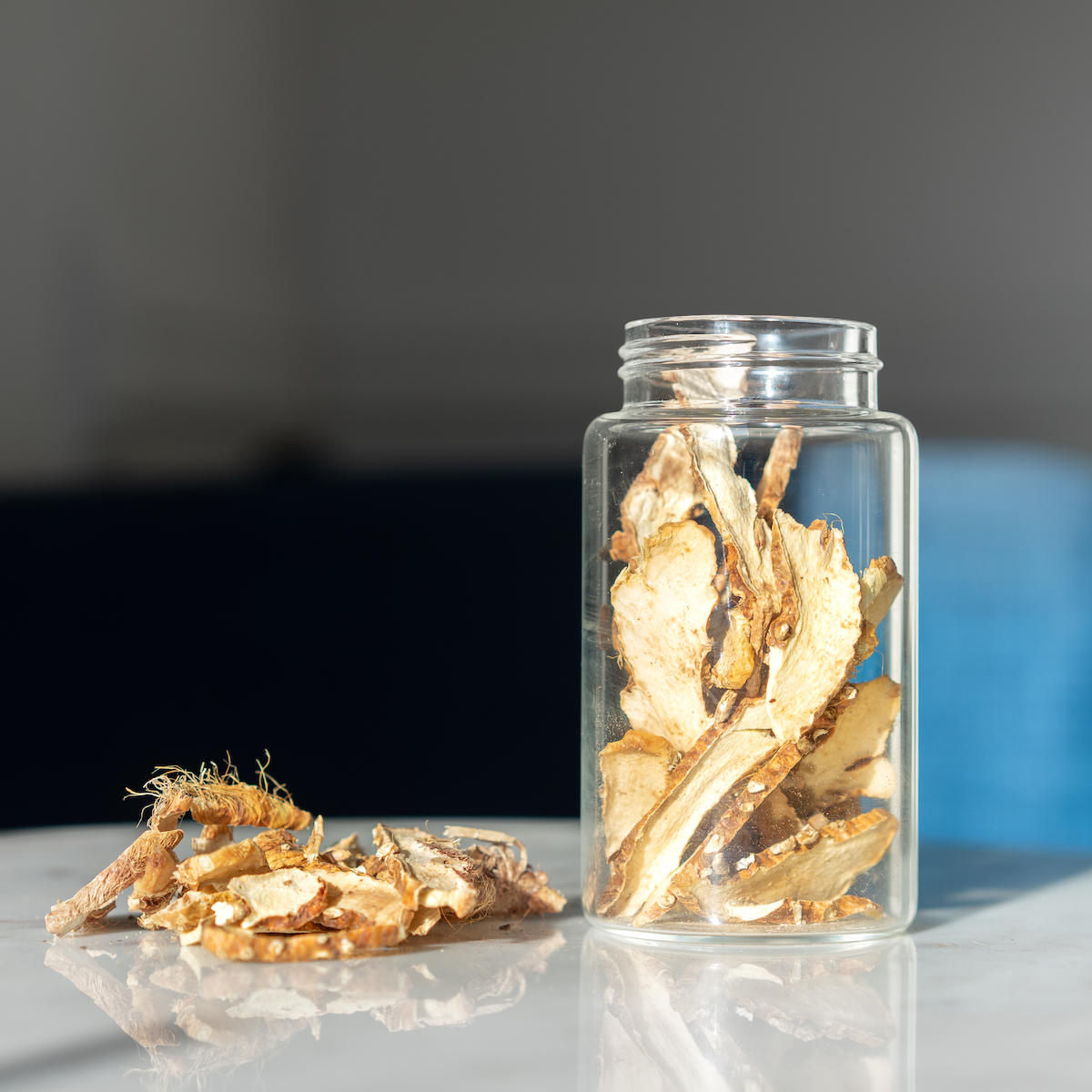
COMMON NAME (Chinese Name)
Anemarrhena Rhizome (Zhi Mu)
BOTANICAL NAME
Anemarrhena asphodeloids Bge.
USES
Anemarrhena rhizome is the dried tuber of Anemarrhena asphodeloides Bge. It is a rich source of various bioactive compounds such as flavonoids, saponins, alkaloids, tannins, choline, vitamins, and polysaccharides that support the optimal functioning of different organs including kidney, lungs, and stomach. Studies have reported that Anemarrhena rhizome improves symptoms of diabetes, cough, hot flushes, constipation, fever, and infectious diseases. Anemarrhena rhizome helps in clearing out heat from the body specifically from the stomach and lungs. It can also help control profuse sweating, irritability, high fever, and thirst during infectious conditions. Moreover, act as an expectorant, it can help to clear out phlegm produced in the lungs and relieve coughs. Medical studies have also reported that it inhibits the proinflammatory mediators, including interleukin and tissue necrosis alpha, and shows potent anti-inflammatory activity. Thus, it blocks not only the progression of inflammatory cascades resulting in inflammatory bowel disease and neurodegenerative disease, but also strengthens the immune response against unfavorable conditions.
Different studies have suggested that the Anemarrhena rhizome can be used to relieve fever, ease urination, decrease the level of cortical hormones, improve digestion via bile secretion, protect cells against toxins, and free radicals. It can also improve the symptoms of diabetes via decreasing insulin resistance and regulating the metabolism of glucose and lipids. It can also be used in combination with other herbs like licorice root, astragalus root, or Chinese yam for better control of diabetes.
Studies reported that Anemarrhena the rhizome contains potent steroid saponins that show anticancer activity and can be used to effectively manage different cancerous conditions such as breast and hepatic cancer etc. The mechanisms attributed to anticancer effects are inhibition of metastasis, apoptosis, and cancerous cell cycle arrest. Also, the presence of sarsasapogenin showed significantly antidepressant activity in animals via increasing the level of noradrenaline and serotonin.
Anemarrhena is an herb that can strongly drain heat from yin deficiency. It is categorized as a bitter, sweet and cold herb that clears heat and drains fire.
PREPARATION & ADMINISTRATION
The dried tuber of Anemarrhena Rhizoma is cleaned, crushed, and formulated in different dosage forms for oral administration. The most common available formulations include powder, sliced tuber for decoction, and pills that can be taken orally with a meal. Also, it can be used in combination with skullcap to relieve coughs.
To make the powder preparation, the tuber is cleaned, dried, sterilized, tested, and then ground into a powder form intended for its formulation. It can be processed into tabs, caps, or formulas or professional herbalists can use it in their formulations. Also, the powder is available in three forms based on its concentration and purity.
1) Whole Herb: Powder of a whole, single, raw herb (including fruit, stem, root, flower)
2) Herbal Powder: Powder of a single raw herb (tuber only) crushed into a powder
3) 5:1 Concentrated extract: Powder containing a single whole herb (further processed)
Many stores carry both dried and sliced of Anemarrhena Rhizome for at-home decoction as well as pre-processed extracts
PRECAUTIONS
Anemarrhena rhizome is not recommended for individuals having gastric problems, spleen disorders, and those sensitive to low temperatures. Also, avoid the use of Anemarrhena rhizome in case of bowels problem or diarrhea.
Studies have reported that it can be used for the long term as it does not cause any adverse event, however, it’s not recommended for individuals having hypersensitivity to Anemarrhena rhizome. Also, consult a doctor if you have severe medical conditions or experience any side effects with its use. Don’t exceed the recommended dose as it may cause a sudden drop in blood pressure or inhibit heart activity.
Ask a physician or gynecologist about Anemarrhena rhizome use if you are pregnant, trying to conceive, or are a breastfeeding mother, and you should consult with a certified herbalist, physician or other qualified healthcare professional before taking Anemarrhena rhizome.
REFERENCES
Chinese Pharmacopoeia Commission . Pharmacopoeia of the People’s Republic of China (English Edition) Volume I People’s Medical Publishing House; Beijing, China: 2010/2015.

Comments (0)